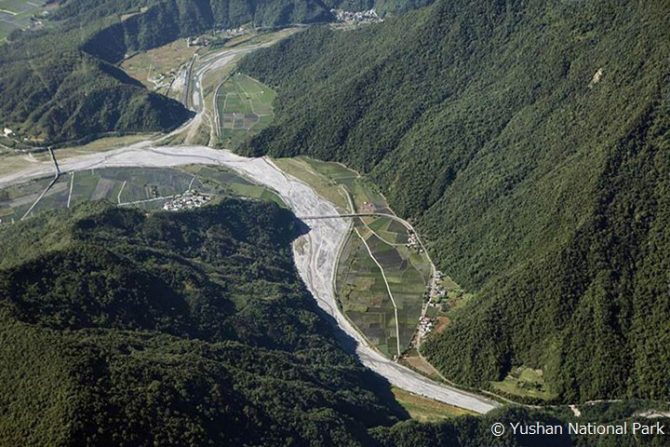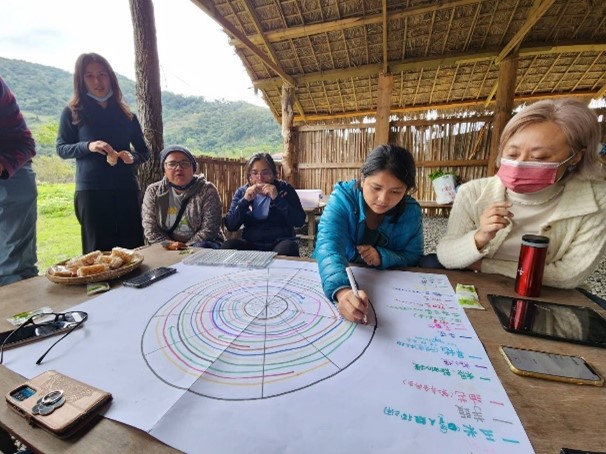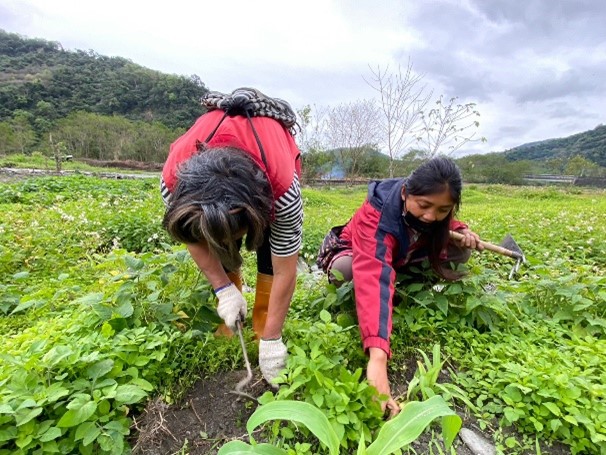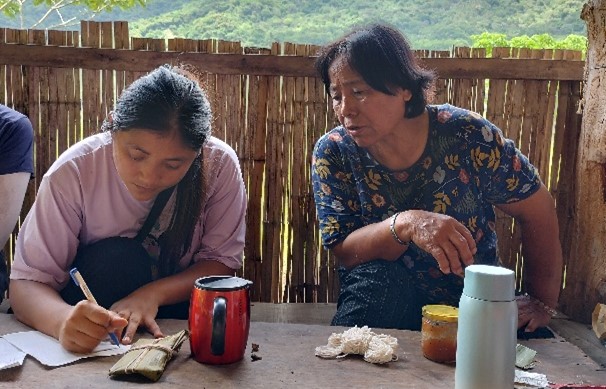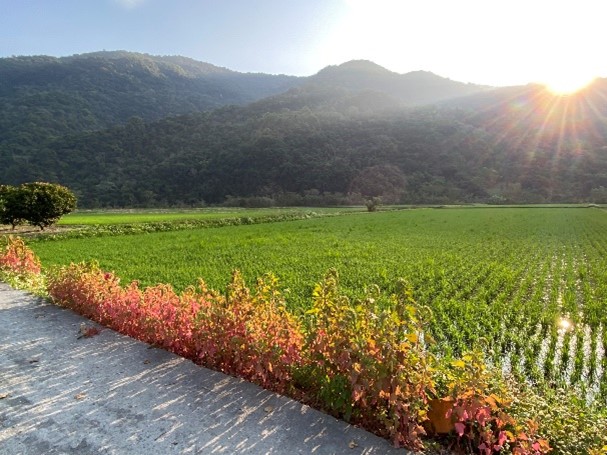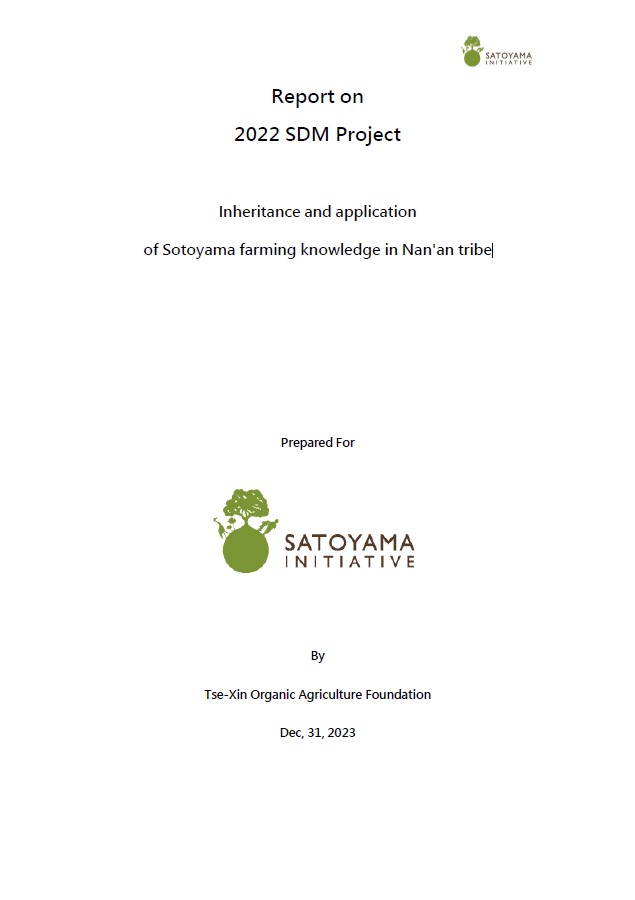2022 CHINESE TAIPEI (TAIWAN)
Inheritance and application of Satoyama farming knowledge in Nan'an tribe
Tse-Xin Organic Agriculture Foundation(TOAF)
Community / field-based implementation
Landscape
Overview
The Nan'an community is an indigenous tribe (the Bunun) located on the outskirts of a national park surrounded by forests and rivers. Colonization and modernization forced Bunun migration to the foothills 50 years ago, altering their relationship with nature and leading to the use of pesticides and fertilizers to increase agricultural yields and thereby increase income. In addition, farmers' income has become overly dependent upon a single crop, which is vulnerable to market movement or climate change. Despite challenges, Bunun elders preserve Satoyama wisdom in home gardens, and over 20 species of landrace legumes are grown, but are not available in the market. Home gardens safeguard crop diversity, the richness of food culture, and local biodiversity. It is urgent to pass the knowledge and wisdom down to the younger generation.
The overall aim of the project was to preserve and utilize the knowledge of traditional farming, pass it to the next generation, and share it with the public. The project had the following objectives:
1. Improve the resilience of the local food system through safeguarding local heirloom and landrace seeds.
2. Teach the younger generation traditional ecological wisdom by practicing farming with elders.
3. Integrate the knowledge and technology of Bunun's Satoyama into school curricula through collaboration with local primary schools.
4. Improve the biodiversity of the production landscape by introducing traditional ecological wisdom.
To achieve the objectives, the following activities were conducted:
- Setting up a community seed bank to preserve the seeds of traditional crops.
- Setting up a learning farm, organizing farming activities, and inviting elders as mentors to guide the younger generation.
- Developing innovative food and agriculture education programs of Bunun Satoyama.
- Inviting the elders, local schools, visitors, and ecological experts to practice habitat improvement in a paddy field.
Key achievements
- Through the seed bank, seed exchange activities among tribal people and between tribal people and other seed conservationists have been revitalized.
- Through activities on the learning farm, elders gained confidence in traditional wisdom, and young generations increased their recognition of traditional culture.
- School children learned about tradition and experienced food culture and field ecology.
- Biodiversity on farmland has also been improved.
Lessons
- Since it is not easy for groups to get together, and farmers are very busy dealing with their daily lives, we need to be careful about how often we mobilize farmers and avoid forcibly mobilizing them and demotivating them to participate.
- We need to be particularly careful to avoid internal conflicts in the distribution of income from activities.
- Through appropriate transformations, including linking traditional wisdom to modern schooling and the eco-tourism market, and creating mentorships, Satoyama agricultural knowledge can be passed on from generation to generation, perpetuated and linked to contemporary life and livelihoods.
Project location
Organisation
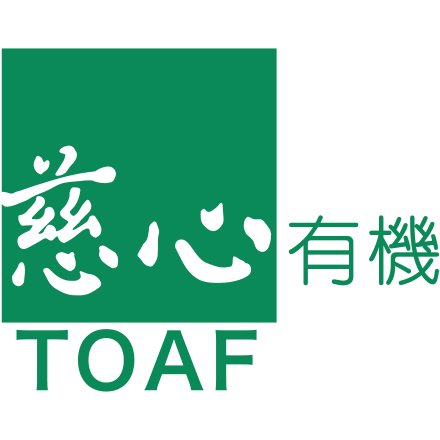
Tse-Xin Organic Agriculture Foundation(TOAF)
- Sector
- Non-governmental / civil society
- Country
- Taiwan
- Website/SNS
- https://toaf.org.tw/
Related products
Inheritance and application of Sotoyama farming knowledge in Nan’an tribe
- Publisher
- Tse-Xin Organic Agriculture Foundation(TOAF)
The Nan'an village is an indigenous tribe (the Bunun) located on the outskirts of the national park surrounded by forests and rivers. About 50 years ago, the Bunun were forced to migrate from the mountains to the foothills due to the impact of colonization and modernization. Not only the way of Bunun’s farming and lifestyle but also the ethical relationship with nature have changed to a model that meets external market needs. Such changes have made farmers use a lot of pesticides and fertilizers to increase production and income, and caused harm to the environment and wildlife. In addition, farmers' income has become overly dependent upon single crop, which is vulnerable to market movement or climate change.
However, the wisdom of Bunun Satoyama is still practiced by the elderly and kept in the home gardens. We have found more than 20 species of landrace legumes that are not available in the market. The home gardens protect the diversity of crops, the richness of the food culture, and the biodiversity of the area. The SDM project integrat ed different stakeholders and conducted different activities to maintain the SEPLS and pass the knowledge and wisdom down to the young generation.
Bunun Satoyama Workshop video
- Publisher
- Tse-Xin Organic Agriculture Foundation(TOAF)
Relevant projects
Projects of the same year
Kunming-Montreal Global Biodiversity Framework Targets
Kunming-Montreal Global Biodiversity Framework Targets
-
Restore 30% of all Degraded Ecosystems
-
Conserve 30% of Land, Waters and Seas
-
Reduce Pollution to Levels That Are Not Harmful to Biodiversity
-
Minimize the Impacts of Climate Change on Biodiversity and Build Resilience
-
Manage Wild Species Sustainably To Benefit People
-
Enhance Biodiversity and Sustainability in Agriculture, Aquaculture, Fisheries, and Forestry
-
Enable Sustainable Consumption Choices To Reduce Waste and Overconsumption
-
Ensure Participation in Decision-Making and Access to Justice and Information Related to Biodiversity for all
-
Ensure Gender Equality and a Gender-Responsive Approach for Biodiversity Action
Sustainable Development Goals
Sustainable Development Goals
-
Zero hunger
-
Responsible consumption, production
-
Climate action
-
Life on land
